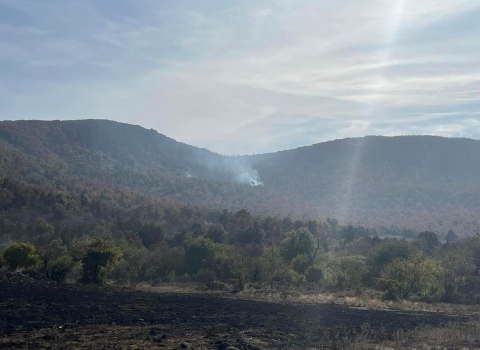Today, the U.S. Fish and Wildlife Service is listing the Puerto Rican harlequin butterfly, a rare, medium-sized butterfly native to the northern and west-central regions of Puerto Rico, as threatened under the Endangered Species Act (ESA). With this listing, the Service will also designate 41,266 acres in Puerto Rico as critical habitat and implement a 4(d) rule that will tailor take prohibitions for the conservation of the species.
“The Puerto Rican harlequin butterfly is a remarkable creature found only in Puerto Rico,” said the Service’s Regional Director, Leopoldo Miranda-Castro. “Listing the butterfly under the Endangered Species Act will help us better support our partners as we work together to recover this rare beauty.”
Threatened by habitat modification, fragmentation, and losses caused by urban development and agricultural practices, only six populations of the butterfly are known to exist, each generally small in size with less than 50 adults observed in any given year. Other threats include human-induced fires, improperly applied pesticides and herbicides, and clearing of native vegetation, including the species’ host plant, the prickly bush. Relative to historical conditions, the distribution of the Puerto Rican harlequin butterfly is fragmented among remnants of native forest located in northwestern and central Puerto Rico.
Critical habitat is being designated for areas that possess the physical and biological characteristics necessary for all the butterfly’s life processes. Critical habitat for the butterfly only includes occupied habitat where the species already occurs, including a two-kilometer buffer around breeding sites. In total, approximately 41,266 acres are being designated – 56% private lands, 39% owned and managed by the Puerto Rico Department of Natural and Environmental Resources, and 5% percent owned by other agencies. In Maricao, much of this habitat overlaps with locations that are already designated as critical habitat for another species, the elfin woods warbler.
The designation of critical habitat on private land has no impact on individual landowner activities unless they also involve activities by a federal agency or require federal funding or permits. Critical habitat designation does not affect landownership or establish a wildlife refuge, preserve or other conservation area conservation area
A conservation area or wildlife management area is a type of national wildlife refuge that consists primarily or entirely of conservation easements on private lands. These conservation easements support private landowner efforts to protect important habitat for fish and wildlife. There are 15 conservation areas and nine wildlife management areas in the National Wildlife Refuge System.
Learn more about conservation area , nor does it allow the government or public access to private lands.
For threatened species, the Service uses the flexibility provided under section 4(d) of the ESA to tailor take prohibitions for the conservation of the species. This targeted approach helps reduce regulatory burdens by exempting certain activities that do not significantly harm the species, or that are beneficial, while focusing conservation efforts on the threats detrimental to recovery. For more information on the 4(d) rule for the Puerto Rican harlequin butterfly, please visit our Frequently Asked Questions.
Since 2011, the Service has been working with Puerto Rico (through the Puerto Rico Department of Natural and Environmental Resources) and other partners such as the Fort Worth Zoo, North Carolina Zoo, Para La Naturaleza, and Liga Ecológica Quebradillana to locate populations of the Puerto Rican harlequin butterfly, describe its habitat, and identify threats. The Service has also been providing technical assistance on projects that may benefit the Puerto Rican harlequin butterfly, working to increase awareness of this rare species.
In 2021, the Service’s Caribbean Ecological Services Field Office coordinated and conducted the first release of captive-reared individuals of the butterfly. Fifty-one individuals in different life cycle stages (11 adults, 34 chrysalids, and 6 caterpillars) were released into their natural habitat in the municipality of Quebradillas. The released individuals were reared as part of a study conducted by the Puerto Rico Department of Natural and Environmental Resource and Fort Worth Zoo to increase knowledge on the species’ life cycle.
The complete listing rule can be obtained by visiting the Federal eRulemaking Portal: https://www.regulations.gov/ and searching for Docket Number FWS–R4–ES–2020–0083. This rule finalizing the listing and critical habitat is effective January 3, 2023.
The mission of the U.S. Fish and Wildlife Service is working with others to conserve, protect, and enhance fish, wildlife, plants, and their habitats for the continuing benefit of the American people. For more information on our work and the people who make it happen, visit www.fws.gov/southeast. Connect with us on Facebook at www.facebook.com/usfwssoutheast, follow our tweets at www.twitter.com/usfwssoutheast, watch our YouTube Channel at http://www.youtube.com/usfws, and download photos from our Flickr page at http://www.flickr.com/photos/usfwssoutheast.



